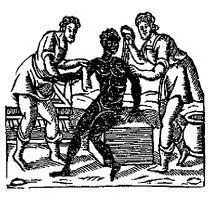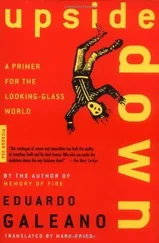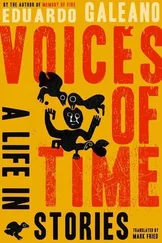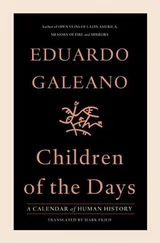He signed a contract with the French Compagnie de Guinée and his cousin, the king of France.
The contract gave each monarch 25 percent of the profits from the sale of forty-eight thousand slaves in the Spanish colonies of America during the following ten years, and established that the trade would be carried out on Catholic ships with Catholic captains and Catholic sailors.
Twelve years later, King Philip signed a contract with the English South Sea Company and the queen of England.
The contract gave each monarch 25 percent of the profits from the sale of one hundred and forty-four thousand slaves in the Spanish colonies of America during the following thirty years, and established that the blacks must not be old or defective, must have all their teeth, and must bear the seals of the Spanish Crown and the British company, branded in a visible spot.
The owners guaranteed a quality product.
BRIEF HISTORY OF TRADE BETWEEN AFRICA AND EUROPE

Hereditary slavery had been around since the times of Greece and Rome and was nothing new. But with the Renaissance, Europe introduced certain novelties: never before had slavery been determined by skin color, and never before had the sale of human flesh been the brightest light in the world of business.
During the sixteenth, seventeenth, and eighteenth centuries, Africa sold slaves and bought rifles: it traded hands for arms.
Then during the nineteenth and twentieth centuries, Africa delivered gold, diamonds, copper, ivory, rubber, and coffee in exchange for Bibles: it traded the riches of the earth for the promise of heaven.


A map published in Paris in 1761 revealed the origins of Africa’s horror. It depicted a variety of savage beasts crowded around the scarce watering holes in the desert, fighting to get at the water. Excited by the heat or by thirst, the animals mounted whatever happened to be near, paying no attention to species, and such promiscuity gave rise to the most dreadful monsters in the world.
Africans had the good fortune of being saved from this hell by the slave trade. Baptism opened the door to Paradise.
The Vatican had foreseen it. In 1454, Pope Nicholas V gave the king of Portugal authorization for the slave trade as long as he converted the Africans. A couple of years later another bull from Pope Callixtus III established that the capture of Africa was a Crusade of Christianity.
Back then, most of the African coast was still out of bounds due to fear: ship-eating serpents lay in wait in the boiling waters, and white sailors turned black as soon as they set foot on African land.
But over the following centuries, all or nearly all the European crowns built forts and outposts along the length of that ill-reputed coast. From there, they ran the most profitable business of all. And to fulfill the will of God they sprinkled holy water on the slaves.
In the contracts and in the accounts, slaves were referred to as “pieces” or “merchandise,” even though baptism placed souls in those empty bodies.

The slaves trembled as they boarded the ships. They believed they were going to be eaten. They were not far off. When all was said and done, the slave trade was the mouth that devoured Africa.
Long before, African kings held slaves and fought each other, but the capture and sale of people became the axis of the economy and of everything else only after the kings of Europe devised the venture. Black Africa was then bled of young people and, thus emptied, its destiny was sealed.
Mali is now one of the poorest countries in the world. In the sixteenth century it was an opulent and cultured kingdom. The university at Timbuktu had twenty-five thousand students. When the sultan of Morocco invaded Mali, he did not find the yellow gold he sought, because little was left. But he found black gold to sell to the European traffickers, and thus profited even more: his prisoners of war, among whom were doctors, judges, writers, musicians, and sculptors, were enslaved and marched off to the plantations of America.
The slavery machine demanded hands and the hunt for hands demanded arms. The war economy of Africa’s kingdoms came to depend more and more on things come from afar. A catalog published in 1655 in Holland listed the weaponry most coveted on the African coast, and also the best offerings with which to entice those stage prop kings. Gin was highly prized, and a fistful of Murano glass beads was worth seven men.

The sale of slaves unleashed a shower of imported products.
Although Africa produced good quality iron and steel, European swords were status symbols for the monarchs and courtiers of the many kingdoms and principalities that sold blacks to the white companies.
It was the same story with African fabric made of fibers ranging from cotton to tree bark. At the beginning of the sixteenth century, Portuguese navigator Duarte Pacheco reported that palm-leaf clothing from the Congo was “soft as velvet and so beautiful that Italy does not have better.” But imported clothing, which cost twice as much, conferred prestige. Price dictated value. Being cheap and abundant, slaves were worth nothing, while expensive and scarce objects were coveted. And the less practical the better: the fascination with what came from abroad gave pride of place to useless novelties and changing fashions, today this, tomorrow that, the day after who knows what.
These fleeting splendors, symbols of power, separated the rulers from the ruled.
Like today.

The slave trader who loved freedom more than anything named his finest ships the Voltaire and the Rousseau .
Several traffickers christened their vessels with religious names: Souls, Misericordia, The Prophet David, Jesus, Saint Anthony, Saint Michael, Saint James, Saint Philip, Saint Anne, and Our Lady of the Immaculate Conception.
Others paraded their love for humanity, nature, or their girlfriends: Hope, Equality, Friendship, Hero, Rainbow, Dove, Nightingale, Humming-bird, Desire, Charming Betty, Little Polly, Lovable Cecile, Prudent Hannah.
The most forthright called their ships Subordinator and Vigilante.
These ships laden with human cargo did not announce their arrival in port with sirens or fireworks. No need. Their presence could be felt from afar, by the stench.
In the hold, their pestilent merchandise was piled high. The slaves lay together day and night without moving, packed in so tightly no space was wasted, pissing on each other, shitting on each other, chained one to another, neck to neck, wrist to wrist, ankle to ankle, and all of them shackled to long iron bars.
Many died on the ocean voyage.
Each morning the guards tossed those packages overboard.
PROGENY OF THE MIDDLE PASSAGE

The leaky little tubs which the sea devours are the granddaughters of those slave ships.
Читать дальше



















